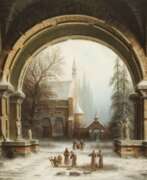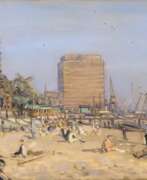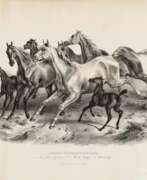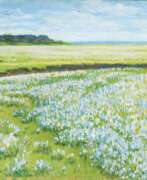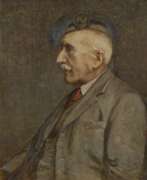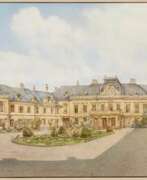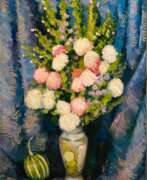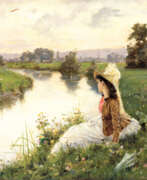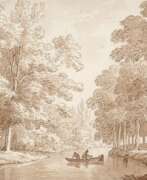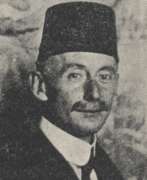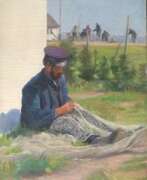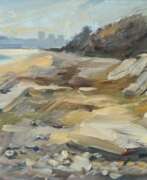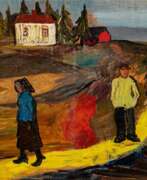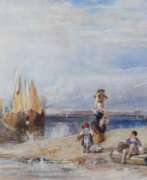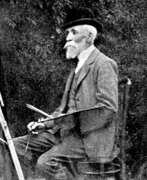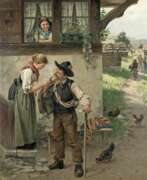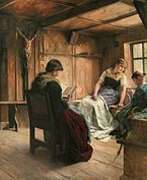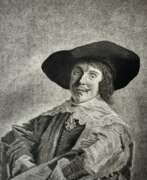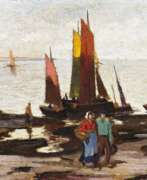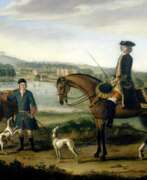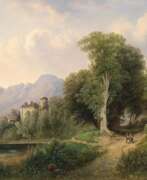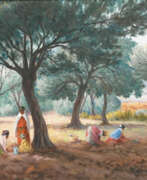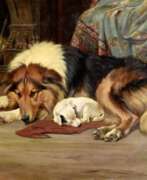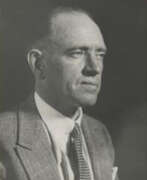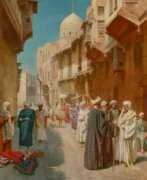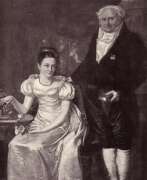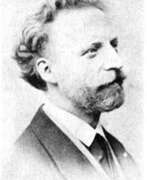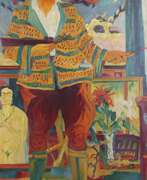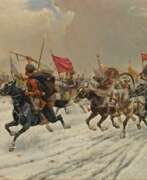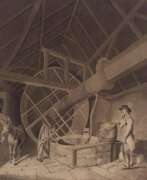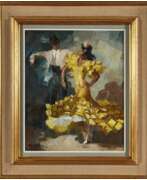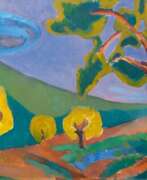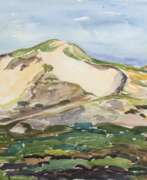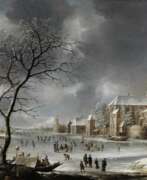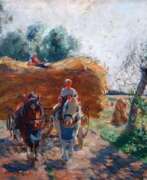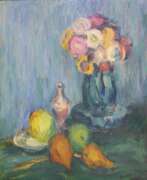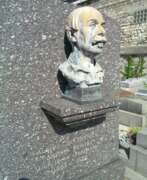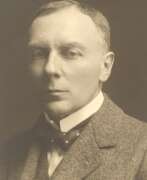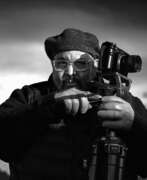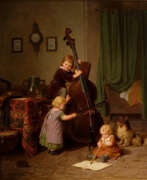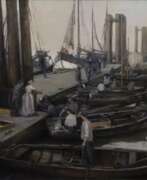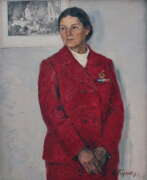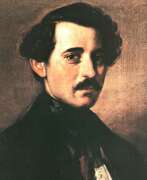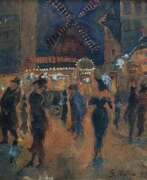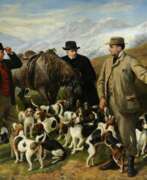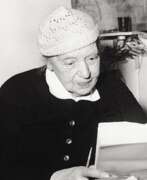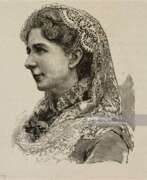Landscape painters Genre art
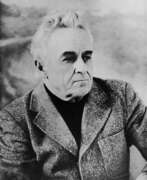

Alexander Grigorievich Maksymenko (Russian: Александр Григорьевич Максименко) was a Soviet and Ukrainian painter of the second half of the twentieth and early twenty-first centuries. He is known as a painter, graphic artist, watercolorist, and art historian.
Alexander Maksymenko worked in the genres of still life, landscape, portrait, as well as in genre painting. His genre works cover themes of collective farm life, including "Masters of the Land" and "Innovators of Collective Farm Fields". For the latter work he received the Stalin Prize. The master actively participated in exhibitions in Ukraine and abroad. His works are in the National Art Museum of Ukraine, the Museum of the History of Ukraine in World War II, as well as in other art museums and private collections.
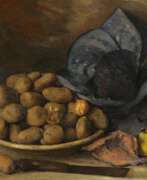

Wilhelm Schmurr was a German painter and co-founder of the Sonderbund in Düsseldorf. His style, characterized by clear expression, was influenced by the Pre-Raphaelites, Symbolists, and Realists. He received several awards and medals for his work and was a member of various art associations. Schmurr taught at the Kunstakademie Düsseldorf and inspired by the farmers after the war, he created scenes of simple life and still lifes. He was awarded the Karl-Ernst-Osthaus-Preis and the Bundesverdienstkreuz erster Klasse and became an honorary member of various artist associations.
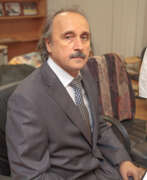

Sultan Shamsutdinovich Abaev (Russian: Султан Шамсутдинович Абаев), a Chechen and Russian artist born on November 1, 1954, in Khaidarkan, Soviet Union, is celebrated for his distinctive contributions to landscape art. A member of the Artists Unions of Saint Petersburg and the Chechen Republic, Abaev's work exemplifies his profound connection to his cultural roots and the rich landscapes that inspire him.
Educated at the prestigious Repin Institute of Painting, Sculpture, and Architecture in Saint Petersburg, Abaev has been honored multiple times for his artistic achievements, including receiving the title of Honored Artist of the Russian Federation. His works have been internationally recognized, finding places in private collections across countries such as Germany, the United States, and Japan.
Abaev's career also includes time spent abroad in Sri Lanka and South Korea from 1991 to 1993, where he expanded his artistic horizons and produced a series of paintings influenced by these experiences. Today, his works are sought after by collectors, especially those interested in landscapes and cultural narratives embedded in art.
Stay updated on exhibitions and sales related to Sultan Shamsutdinovich Abaev's enchanting landscapes by signing up for our exclusive alerts. These updates are essential for collectors and art connoisseurs interested in owning a piece of Chechen and Russian art history.
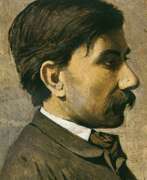

Giuseppe Abbati was an Italian artist, renowned for his role in the Macchiaioli movement. Born on January 13, 1836, in Naples, Abbati's early exposure to art came from his father Vincenzo, who specialized in painting architectural interiors. This foundational experience deeply influenced his initial works, which were primarily interiors. However, Abbati's artistic journey took a significant turn after losing his right eye in the Battle of Capua during Garibaldi's 1860 campaign. This event marked a period of transformation, leading him to Florence where he engaged deeply with the Macchiaioli group at Caffè Michelangiolo.
Abbati's contribution to the Macchiaioli movement was profound, characterized by a bold treatment of light and shadow, a technique he mastered by painting en plein air. His landscapes, such as the "View from the Wine Cellar of Diego Martelli" (1866), exemplify his skill in capturing the interplay of light, offering viewers a luminous landscape scene glimpsed through the doorway of a darkened interior. His works are celebrated for their unique perspective and are housed in prestigious collections, including several museums across Italy.
Tragically, Abbati's promising career was cut short at the age of 32, when he died in Florence from rabies, a consequence of a dog bite. Despite his brief life, his artistic legacy endures, influencing generations of painters who admire his innovative approach to natural light and landscape.
For enthusiasts and collectors keen on exploring Giuseppe Abbati's work further or acquiring pieces associated with him, subscribing to updates on new sales and auction events is highly recommended. Stay informed on opportunities to own a piece of this remarkable artist's legacy. Subscribe today for exclusive updates.
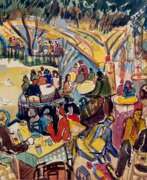

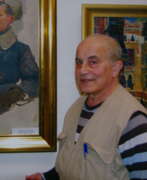

Victor Ashotovich Abramyan (Russian: Виктор Ашотович Абрамян) was a Soviet and Russian artist of the second half of the twentieth and early twenty-first centuries. He is known as a painter, a representative of the Leningrad school.
Victor Abramyan created portraits, landscapes, still lifes and genre paintings. He participated in exhibitions from the early 1970s in Leningrad. Among his famous works are "Blockade everyday life", "Still Life with a Centennial", "Leningrad. 1942. Women on Guard in the besieged city", "Young Guests" and others.
Abramyan's works are in museums and private collections in Russia and many other countries.
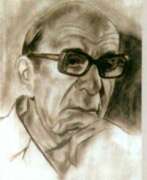

Memet Abselyamovich Abselyamov (Russian: Мемет Абселямович Абселямов) was a mid-20th century Soviet artist of Crimean Tatar origin. He is known as a landscape painter.
Memet Abselyamov became famous in 1935 with his genre painting "Kolkhoznitsy Udarnitsy", which was awarded the All-Russian prize and acquired by the Moscow Museum of Folk Art. During his life in Tajikistan, where he came after the deportation of the Crimean Tatars, the artist created mainly landscapes, including the paintings "Night in the Crimea", "Crimean Cypresses", "Gurzuf. Where A. Pushkin visited", "Sunny Day", "Spring in Tajikistan", "The Last Ray" and others.
He was a member of such creative associations as "Krymkhudozhnik", the Union of Artists of the USSR, the Union of Artists of the Tajik SSR.
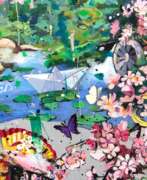

Angelo Accardi is a contemporary Italian artist. He grew up surrounded by both modern and traditional art. Although he studied fine art at the Art Academy of Naples, he never completed his training. Angelo Accardi illustrates surreal visions of everyday life under realistic backdrops of urban and natural landscapes. There is never a single meaning, but a whole story behind each painting. Ironic, striking, and playful, Accardi’s unique perspective and avant-garde style is a result of his diverse inspirations.
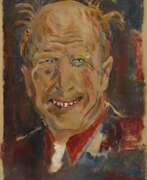

Lucien Adrion was a French post-impressionist painter, draughtsman and printmaker. He is known for his depictions of the French countryside and beaches, as well as of Parisian life, including landscapes, still lifes, figures and landmarks.
Throughout his career, Adrion exhibited his work at the Salons in Paris, where he was praised for his ability to capture the movement and transience of city life.
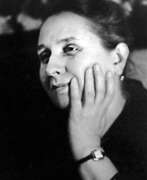

Taisia Kirillovna Afonina (Russian: Таисия Кирилловна Афонина) was a Soviet artist of the second half of the twentieth century. She is known as a painter, graphic artist, representative of the Leningrad school.
Taisia Afonina participated in exhibitions since 1940, creating portraits, landscapes, genre compositions, still lifes and etudes. At the beginning of her career she was interested in military subjects, and then delved into the genre of portraiture and lyrical landscape. Her style is characterized by tonal painting, the rendering of light and air environments and subtle coloristic combinations. In the 1980s she preferred the watercolor technique, painting flowers such as roses, daisies and tulips. Her works are in museums and private collections in Russia and other countries.
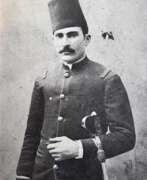

Abdul Qadir Al Rassam was an Iraqi painter of the first half of the twentieth century. He is known as a painter and graphic artist and is considered the founder of modern Iraqi painting.
Al Rassam, a military officer by training, studied drawing at the Military College in Istanbul. Returning to Iraq, he created landscapes, portraits and murals. His work is characterized by historical and ethnographic accuracy. The master, according to critics, contributed to the influence of the European academic school on the Iraqi art scene.
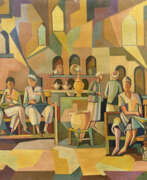

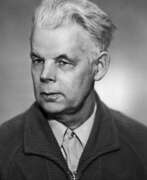

Pyotr Filippovich Alberti (Russian: Пётр Филиппович Альберти) was a Soviet and Russian artist of the second half of the twentieth century. He is known as a painter, a representative of the Leningrad school.
Pyotr Alberti created portraits, landscapes, genre paintings. He actively exhibited since 1951 in Leningrad, demonstrating his works along with the masters of his time. The artist had a broad writing and bright coloring, expressive stroke and used various techniques. He paid special attention to the study of nature. In the late period of his career, he became fond of still life paintings with favorite motifs such as peonies and watermelons.
Alberti's works are preserved in museums and collections around the world.
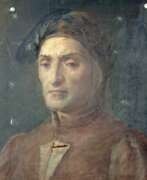

William Herbert Allen was an English landscape watercolour artist whose career spanned more than 50 years from the 1880s to the 1940s. He was invariably referred to as «W. H.» rather than by his given name. He produced several thousand watercolours, chalk and pencil sketches mainly of the landscapes, traditions and people of West Surrey and North-east Hampshire. In addition, he produced scenes of other parts of the British Isles and various parts of continental Europe. These works included commissions in Italy for the Victoria and Albert Museum, Dublin, Edinburgh and Preston museums. He was made a member of the Royal Watercolour Society in 1903 and the Royal Society of British Artists in 1904 and his work was exhibited at the Royal Academy in 1927.
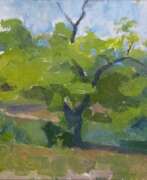

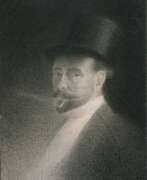

Charles Angrand was a French painter and draftsman known for his Pointillist style and depictions of rural life. Born in Normandy, Angrand moved to Paris in his youth to study art. He was initially influenced by the Realist and Impressionist movements, but later developed his own style of Pointillism, which he applied to landscapes, cityscapes, and genre scenes.
Angrand's Pointillist technique involved the use of small, distinct dots of color that, when viewed from a distance, blended together to create the impression of a more vibrant and luminous image. His work often focused on the people and landscapes of rural France, and he was particularly interested in the effects of light and atmosphere on his subjects.
Angrand exhibited his work at many important exhibitions, including the Salon des Indépendants and the Salon d'Automne in Paris. He was also involved in the Neo-Impressionist movement, which sought to explore the scientific principles of color and optics in painting.
Despite his contributions to the development of Pointillism, Angrand's work was largely forgotten after his death, and it was not until the mid-20th century that he began to be rediscovered by art historians and collectors. Today, his paintings are represented in many important collections, including the Musée d'Orsay in Paris and the Art Institute of Chicago.
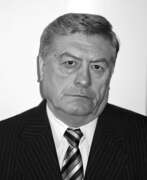

Pavel Efimovich Anosov (Russian: Павел Ефимович Аносов) was a remarkable artist and painter, renowned for his evocative depictions of the Zabaykalsky landscapes. Despite lacking formal artistic education, his passion for painting was ignited while working as a draftsman and later as an artist in a club. Following his demobilization in 1946, he joined the Chita Artistic Production Workshops of the Art Fund and attended the studio associated with the Fund. His artistic journey commenced, and by 1949, he was actively exhibiting his works.
Anosov's artistic focus predominantly revolved around the Zabaykalsky landscapes, capturing their essence with mesmerizing skill. In addition to landscapes, he ventured into still life paintings and thematic works. However, in the late 1970s, he left Chita, seeking new horizons. Today, his masterpieces are preserved in the archives of the Zabaykalsky Regional Museum, a testament to the enduring legacy of Pavel Anosov's artistic brilliance.
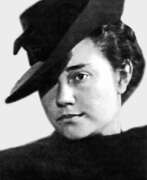

Evgenia Petrovna Antipova (Russian: Евгения Петровна Антипова) was a notable Russian painter, graphic artist, and art teacher. She stood out for her genre compositions, portraits, landscapes, and still lifes, primarily utilizing oils and watercolors. Evgenia Antipova's works often depicted apple orchards and Crimean landscapes, showcasing her profound connection to nature and her ability to capture its essence.
Evgenia Antipova's education at the prestigious Repin Institute of Arts shaped her artistic journey, leading to a career enriched with personal exhibitions and a significant presence in the art community. Not only did her artworks gain recognition in Russia, but they also found their way into international collections and exhibitions, notably in France, Germany, the United States, and the United Kingdom.
Throughout her career,Evgenia Antipova was an active participant in various significant exhibitions, displaying her works alongside other renowned artists. Her contributions to the art world were recognized with personal exhibitions in Saint Petersburg and inclusion in art auctions and exhibitions abroad.
Evgenia Antipova's paintings are part of prestigious collections, including the State Russian Museum, and continue to be celebrated in art museums and private collections globally. Her legacy as a prominent figure in the Leningrad School of painting endures, captivating art enthusiasts and collectors with her vivid and emotionally resonant works.
For those interested in Russian art, particularly the Leningrad School of painting, Evgenia Petrovna Antipova's oeuvre offers a rich exploration of genre compositions and landscapes, reflecting the artistic vibrancy of her era. Collectors and art experts are encouraged to delve into her works and consider signing up for updates on exhibitions and sales featuring her paintings.
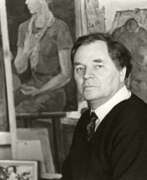

Fyodor Vasilievich Antonov (Russian: Фёдор Васильевич Антонов) was a Soviet and Russian artist of the twentieth century. He is known as a painter, graphic artist, textile artist, teacher, and professor.
Fyodor Antonov created landscapes, portraits and thematic compositions. In his genre works he immortalized the life and life of Soviet youth, as well as the formation of industry in the USSR. During the Great Patriotic War, the artist created portraits of heroes, as well as posters with a simple and direct pictorial form. Antonov's works are in various museum collections, including the Tretyakov Gallery, the Russian Museum and many private collections.
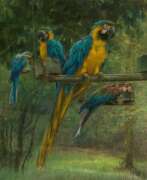

Berthe Constance Ursule Art was a Belgian still life painter. She was trained by Alfred Stevens and advised by Franz Binjé. Berthe Art exhibited her work at the Palace of Fine Arts and The Woman's Building at the 1893 World's Columbian Exposition in Chicago, Illinois. She became a member of the Brussels-based club called Cercle des Femmes Peintres which was active 1888–1893. They were the Belgian equivalent of the French Union des Femmes Peintres et Sculpteurs. She began a Brussels gallery in 1911 together with some friends from the (by then defunct) Circle of Women Painters. The gallery was called the Galerie Lyceum.
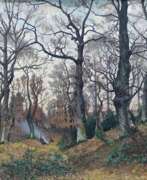

Alphonse Asselbergs was a Belgian painter, primarily of landscapes and forest scenes. Much of his training in art came from Huberti, and he would travel with him in the area around Namur. It was there he befriended Théodore T'Scharner, a student of Ferdinand Marinus, with whom he would go on painting expeditions in the Ardennes. In the summer of 1866, he took an extended trip with Huberti, to the artists' colony at Anseremme, where he was first exposed to the concept of painting en plein aire. In 1867 year he joined the painters at the artists' colony in Tervuren, where he stayed regularly until 1871. The Tervuren Schhol later became known as the Belgian equivalent of the Barbizon School. By 1868, he was receiving good reviews at the salon in Ghent. That same year, he became one of the co-founders of the Société Libre des Beaux-Arts. By 1869, he was exhibiting in Brussels. From 1873 to 1874, he visited Algeria with the watercolorist, Arthur Bouvier. This resulted in a number of Orientalist canvases.
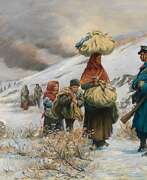

Rodolphe Auguste Bachelin was a Swiss landscape, history and portrait painter as well as a writer, historian and art critic.
He was interested in the Lombardy War of 1859 and in particular in the Franco-Prussian War of 1870 to 1871, which provided him with several subjects with its troop surge at Les Verrières. The Neuchâtel painter was greatly influenced by the writings of Rodolphe Töpffer and aspired to become a Swiss national painter.
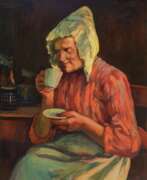

Gottfried Albert Maria Bachem was a German painter and illustrator of the Düsseldorf School. Bachem, who belonged to the Malkasten artists' association from 1921 to 1932, painted portraits, genre scenes and landscapes, and he also illustrated children's books. From 1900 he took part in numerous art exhibitions, including in Berlin.
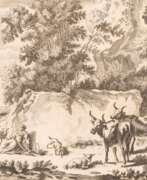

Elias Baeck called "Heldenmuth", was a German painter and engraver from Augsburg. Baeck worked for some time in Rome, then in Laybach, but finally returned to Augsburg, where he died in 1747. His chief works — both in painting and engraving — were portraits and landscapes. His engravings are sometimes signed "E.B.a.H.", standing for "Elias Baeck, alias Heldenmuth".
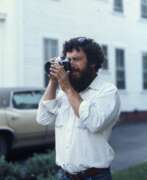

John Baeder is an American painter closely associated with the photorealist movement. He is best known for his detailed paintings of American roadside diners and eateries. His interest in small towns across America began when he was young by photographing old cars and other relics. He started working as an art director in Atlanta for a branch of a New York advertising agency in 1960, and subsequently moved to New York City in 1964. He went on to have a successful career in advertising through the early 1970s, while continuing to paint, draw and photograph on his own time. Baeder left the advertising field in 1972 to pursue his artistic career full-time. The same year, OK Harris Gallery in New York began exhibiting his artworks. Since then, he has had more than thirty solo exhibitions at art galleries. His work includes oil paintings, watercolors and photographs. Baeder’s work aims to chronicle the disappearing aspects of American culture. Baeder is the recipient of the Tennessee Governor's Distinguished Artist Award in 2009.
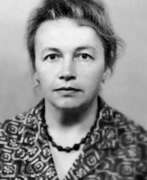

Irina Mikhailovna Baldina (Russian: Ирина Михайловна Балдина) was a Soviet and Russian artist of the second half of the twentieth and early twenty-first centuries. She is known as a painter, a representative of the Leningrad school.
Irina Baldina participated in exhibitions in Leningrad since 1952. Her work covered a variety of genres, including portraits, landscapes, still lifes and genre compositions. From 1960 to 1980, her works were characterized by themes of modernity, nature and people of Zaonezhye. Her style was characterized by broad brushstrokes, decorative and mastery in conveying the colors of northern nature.
Her works are in museums and private collections all over the world, including Russia, France, USA, Japan and other countries.
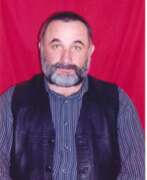

Issa Abasovich Barkhanoyev (Russian: Исса Абасович Барханоев) was a Soviet and Russian Ingush artist of the last quarter of the twentieth and early twenty-first centuries. He is known as a painter, draughtsman, landscape painter, genre painter and poet, a self-taught artist.
Issa Barkhanoyev created more than 500 paintings during his career, in which, according to critics, he skillfully conveyed his deep thoughts and feelings through images and symbols, and these works of art epitomize spirituality and life philosophy. The works of the folk artist are in museums of the Republic of Ingushetia and private collections.


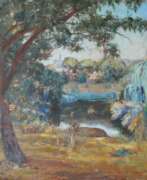

Ethel Barringer was a South Australian artist who excelled in various media, but was particularly known for her etchings. She was educated at the Advanced School for Girls under Miss Rees George, and was a student of Hans Heysen and Mary Packer Harris at the SA School of Arts and Crafts. She studied in London for several years and took courses in enamelling, jewellery designing, life work, and etching at the St John's Wood Art School and the Sir John Cass Technical School. On her return to Adelaide she set up a studio of her own in Flinders Street, but gave it up when she gained an appointment as assistant teacher at the School of Arts and Crafts on North Terrace.
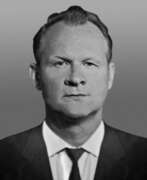

Nikolai Nikolaevich Baskakov (Russian: Никола́й Никола́евич Баска́ков) was a Russian artist, prominent within the Soviet era's art scene. Born in Astrakhan in 1918, Baskakov was celebrated for his mastery in portraiture and his commitment to the Socialist Realism style, an artistic approach favored by the Soviet Union to propagate ideological values through a realistic depiction of everyday life.
Baskakov's contributions to art are not only marked by his technical prowess but also by his ability to capture the ethos of his time. His works often featured workers, collective farmers, and heroes of the Soviet Union, serving both as artistic and ideological tools. Among his notable works, the portraits of Lenin and other political figures stand out, showcasing his skill in depicting influential leaders with a combination of reverence and realism.
His legacy extends beyond his paintings, as Baskakov was also a respected teacher at the Repin Institute of Arts in Saint Petersburg, where he influenced a new generation of Russian artists. His works are preserved in prestigious galleries across Russia, including the Tretyakov Gallery and the Russian Museum, making them a significant part of Russian cultural heritage.
For collectors and enthusiasts of Soviet art, staying informed about exhibitions and sales of Baskakov’s works is essential. Sign up for updates and exclusive alerts on new acquisitions and auction events featuring Nikolai Nikolaevich Baskakov. Stay connected to a pivotal part of art history.
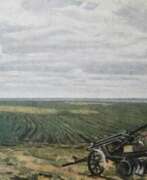

Vasily Nikolaevich Basov (Russian: Василий Николаевич Басов) was a Soviet artist of the mid-twentieth century. He is known as a painter, graphic artist, and representative of socialist realism in art. His oeuvre includes landscapes, portraits and genre paintings, with a special focus on rural subjects.
Since 1943 Vasily Basov actively participated in exhibitions, both national and international. His works have been exhibited in various countries, including Poland, China, Bulgaria and Romania.
Basov's works are in the collections of the State Tretyakov Gallery, the State Art Museum of the Altai Territory and other museums, as well as in private collections.


Jules Bastien-Lepage was a French painter closely associated with the beginning of naturalism, an artistic style that emerged from the later phase of the Realist movement.
His most famous work is his landscape-style portrait of Joan of Arc which currently resides at the Metropolitan Museum in New York City.
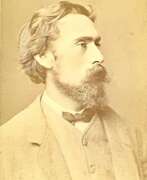

Adalbert Franz Eugene Begas is a German painter and portrait painter. In 1862, Adalbert followed his brother, the sculptor Reinhold, to the Grand Ducal Saxon School of Art in Weimar, where he began working in the workshop of Arnold Böcklin.


Victoria Markovna Belakovskaya (Russian: Виктория Марковна Белаковская) was a Russian Soviet artist of the mid-twentieth century. She is known as a painter, graphic artist and representative of the Leningrad school of painting.
Victoria Belakovskaya participated in exhibitions of Leningrad artists since the early 1930s. Her work covers various genres, including portraits, genre compositions, still lifes and landscapes. Her famous works include "Pioneer Girl" (1931), "Self-Portrait with a Cigarette" (1936), "Leningrad Landscape" (1953), "Spring Flowers. Still Life" (1961), a series of landscapes of Altai, Crimea, Kiev and others.
Works by the artist are in the collections of museums in Russia, Great Britain, USA, France and other countries.
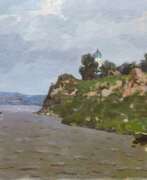

Yakov Tarasovich Besperstov (Russian: Яков Тарасович Бесперстов) was a Russian Soviet artist of the second half of the twentieth century. He is known as a painter, muralist, representative of the Leningrad school of painting.
At the initial stage of his career, Yakov Besperstov worked in the field of monumental and decorative painting, participating in the painting of various buildings. Later he moved to easel painting, creating portraits, genre paintings, as well as urban landscapes. His works were exhibited at exhibitions from the late 1950s and were appreciated by leading artists of Leningrad. The master traveled extensively throughout various regions of Russia and other countries, including France.
His works are in museums and private collections in various countries, including Russia, France, Belgium, Germany, Spain and Italy.
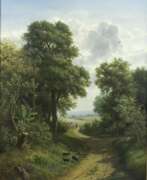

Jan Daniel Beynon was a Dutch-Indonesion landscape, figure and portrait painter. He studied 1848-55 as pupil of C. Kruseman and N. Pieneman at the Amsterdam academy and exhibited in that town repeatedly between 1852 and 1867. In 1855 he returned to the Dutch colony Indonesia; his oeuvre mainly consists of landscapes and persons of that region.
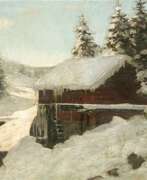

Friedrich (Fritz) Bindewald was a German painter associated with the Düsseldorf School of Art and a member of the German Reichstag.
Friedrich Bindewald studied history painting, anatomy and perspective with Johann Peter Theodor Janssen, Eduard Gebhardt, Hugo Krol and Julius Retting. From 1889 he worked independently on figurative compositions and landscapes with forest motifs from Schwalm, Vogelsberg, Rhen and the Bavarian Alps.
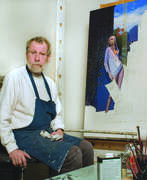

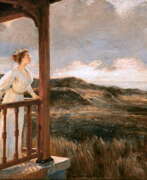

Ernest-Stanislas Blanc-Garin was a Belgian portrait and landscape painter. He came to Brussels in 1863 and became a student of Jean-François Portaels. After that he went to Paris and joined the studio of Alexandre Cabanel, became a student of the Ecole des Beaux-Arts. He took part in the 1867 Prix de Rome competition (“The Murder of Laïus by Oedipus”) and received an honorable mention at this competition in 1868. After a stay in Italy, he settled permanently in Brussels in 1871 and opened a private painting academy. In 1891 he became one of the founding members of the Société des Beaux-Arts de Bruxelles.
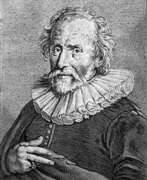

Abraham Bloemaert was a Dutch painter, draughtsman, and printmaker from the Golden Age of Dutch painting, one of the founders of the Guild of St. Luke in Utrecht. Bloemart was a caravagist. He painted mainly landscapes, mythological and biblical scenes, and pastoral works.


Ernest Leonard Blumenschein is an American painter, member of the Taos Society of Artists. He is known for his paintings of the American Southwest. He studied at the Cincinnati Academy of Art and the Julian Academy.
Ernest Leonard Blumenschein often depicted Native Americans and landscapes of the Southwest in his paintings. He was known for his masterful use of colour and light, and his works had a strong sense of realism. Blumenschein also worked as an illustrator and writer, and his book Navajo War Dance is considered a classic of Native American literature.
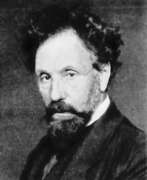

Nikolai Kornilievich Bodarevsky (Russian: Николай Корнилиевич Бодаревский) was a Russian and Ukrainian artist of the last third of the 19th and early 20th centuries of Moldavian origin. He is known as a painter and graphic artist.
Nikolai Bodarevsky created portraits, landscapes and genre paintings. During the early period of his creativity, he was close to the Itinerants, in later years he departed from the Itinerant traditions in the direction of the late "salon" academism. His works are in many museum collections, including the State Tretyakov Gallery in Moscow and the State Russian Museum in St. Petersburg.
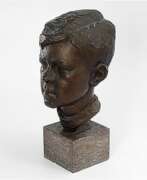

Kurt Bohn was a talented German painter, sculptor, designer and writer. Born into a creative family, he learnt the basics under the guidance of his father, Oskar Bohn. His perseverance and pursuit of artistic excellence led him to Berlin, where he became a pupil of Fritz Klimsch between 1931 and 1935. Under his guidance, Kurt Bohn honed his skills and broadened his artistic horizons.
By 1938, Kurt Bohn had established his own studio in Berlin, signalling his growing independence and the development of his artistic vision. World War II forced Kurt Bohn to move to Ulm in 1945, where he lived until his death.
Kurt Bohn's work has left an indelible mark on the art world, demonstrating his versatility and dedication to art.
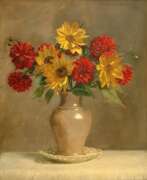

Theodor Bonenberger is a German painter and cavalry officer. He studied with Jacob Grunenwald and Karl von Geberlin at the Stuttgart Art School, then from April 30, 1887 - at the Royal Academy of Arts in Munich with Johann Kaspar Herterich and Carl von Marr. Has been on study trips to Italy, France, Spain and the UK. After completing his studies, he settled in Munich as a freelance artist. Bonenberger also held the rank of major in the cavalry in reserve. From 1895 he took part in many exhibitions in Munich, Düsseldorf and Vienna. In 1936, he completed a portrait of Adolf Hitler, which he presented to Eva Braun for her birthday. He dealt with flower, genre, portrait, landscape and nude painting.
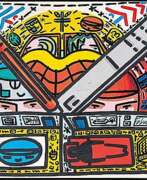

Francois Boisrond is a contemporary French painter. He studied from 1977 to 1980 at the National School of decorative Arts. In 1981 he became involved in the Free Figuration movement. Inspired by visual products (advertising products, posters, stickers, video games etc.), cartoon characters, and by using acrylic paint, Francois Boisrond’s works are colourful, figurative and enigmatic, and his simplified shapes are often outlined in black. He portrays mainly characters, frequently symbolic in everyday situations, but he also depicts urban, maritime or rural landscapes. Besides this Boisrond creates humanitarian and publicity posters. Since the 1990’s the artist has become interested in an imaginary public and the everyday life that invades each and every one of us.
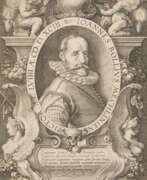

Hans Bol was a Flemish artist renowned for his miniature paintings and prints. Born in Mechelen, Bol was a pivotal figure in the transition from the world landscape tradition to a more realistic portrayal of nature. His early works as a 'water-verwer' offered affordable wall decorations but were susceptible to copying. This led him to create intricate miniatures on parchment, a medium less easily replicated.
Bol's influence on landscape art in the Low Countries is significant. His realistic landscapes, often featuring biblical scenes or daily life, showed a departure from imaginary landscapes, which was common at the time. This shift was partly due to the influence of Pieter Bruegel the Elder. Bol's completion of the Four Seasons series, initially started by Bruegel, established him as a master of landscape art, blending detailed observation with imaginative elements.
Notably, Bol's works are present in prestigious institutions such as the Metropolitan Museum of Art, where pieces like "The Prodigal Son" and various landscapes reflect his mastery of pen, ink, and wash. His artworks, like the "Landscape with a View of Antwerp," stand testament to his skill in capturing the essence of the Dutch landscape, influencing a generation of Dutch painters.
For collectors, auctioneers, and art connoisseurs, Hans Bol's legacy offers a glimpse into the evolution of landscape painting. His works not only adorned the homes of the affluent during his time but continue to be celebrated for their historical and artistic value.
To stay informed about sales and auction events featuring Hans Bol's masterpieces, sign up for updates. By subscribing, you will receive notifications only for new product sales and auction events related to this eminent artist, ensuring you don't miss the opportunity to own a piece of art history.
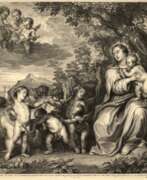

Schelte Adamsz Bolswert was a leading Dutch engraver, noted for his works after Rubens and Van Dyck. Both he and his older brother, Boetius à Bolswert, worked in Amsterdam and Haarlem before settling in Antwerp. For the last five years of his life Boetius worked exclusively on engravings after Rubens. Bolswert's plates were worked entirely with the graver, and he does not seem to have made any use of the drypoint. The freedom which this excellent artist handled the graver, the picturesque roughness of etching, which he could imitate without any other assisting instrument, and the ability he possessed of distinguishing the different masses of colours, have always been admired by the conoisseurs".
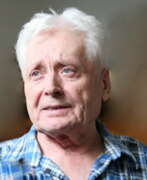

Vasily Pavlovich Borisenkov (Russian: Василий Павлович Борисенков) was a Soviet and Russian artist of the second half of the twentieth and early twenty-first centuries. He is known as a painter and teacher, a representative of the Leningrad school of painting.
Vasily Borisenkov actively participated in Leningrad art exhibitions since 1954, was the author of genre and battle paintings, landscapes and portraits. Among his famous works are the paintings "Difficult Conversation", "Spring", "Strelna. The Beginning of Summer" and many others. The master's works are in museums and private collections both in Russia and abroad.
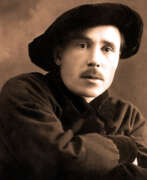

Alexei Nikolaevich Borisov (Russian: Алексей Николаевич Борисов) was a Russian and Soviet artist of the first half of the twentieth century. He is known as a painter, graphic artist, decorator, stage designer and teacher.
Alexei Borisov covered various themes in his work, from landscapes and portraits to works devoted to the partisan movement, industrialization and collectivization in Siberia, where the artist settled. His works, according to critics, stood out for their expressiveness, reverence, poetry and authenticity. The master left a significant creative legacy, including about 700 works of painting, graphics and decorative sketches.
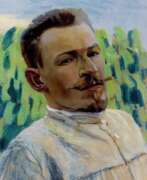

Victor Elpidiforovich Borisov-Musatov (Russian: Ви́ктор Эльпидифо́рович Бори́сов-Муса́тов) was a distinguished Russian artist celebrated for his unique contribution to the Post-Impressionist movement, combining elements of Symbolism, realism, and a decorative style that was all his own. Born in 1870 in Saratov, Russia, into the family of a former serf, Borisov-Musatov overcame early challenges, including a spinal injury that left him humpbacked, to emerge as a pivotal figure in Russian art. His education spanned the Moscow School of Painting, Sculpture and Architecture, and the Imperial Academy of Arts in Saint-Petersburg, further enriched by studies in Paris under the tutelage of Fernand Cormon. His admiration for French contemporaries, especially Pierre Puvis de Chavannes and Berthe Morisot, profoundly influenced his artistic direction.
Borisov-Musatov is renowned for his lyrical, evocative works that often depict the serene and idyllic life of the 19th-century Russian nobility, set against the backdrop of their estates. This half-illusory world, which he masterfully created, reflects a deep nostalgia and a retreat from the industrial harshness of his time. By integrating figures seamlessly into the landscapes, as seen in masterpieces like "The Pool" (1902) and "The Phantoms" (1903), he achieved a harmony that resonates with viewers for its beauty and tranquility. His use of mixed media, including tempera, watercolor, and pastel, allowed for subtle visual effects, making his works distinctive in their soft, dreamlike quality.
Borisov-Musatov's legacy extends beyond his paintings; he was a significant figure in the Russian Symbolist movement and a founding member of the Moscow Association of Artists. His works, which provide a poignant, poetic commentary on the era he lived in, are celebrated in Russian and international art circles alike. Notable paintings like "The Pool" and "The Phantoms" not only highlight his technical skill but also his ability to evoke emotion and atmosphere, making them favorites among collectors and art enthusiasts.
For collectors and experts in art and antiques, Borisov-Musatov's oeuvre offers a fascinating glimpse into the Russian Symbolist movement and the broader cultural milieu of the late 19th and early 20th centuries. His works, preserved in museums and private collections around the world, continue to enchant and inspire.
For those interested in staying informed about new product sales and auction events related to Victor Elpidiforovich Borisov-Musatov, subscribing for updates is highly recommended. This subscription ensures that enthusiasts and collectors alike will not miss the opportunity to own a piece of this remarkable artist's legacy, encapsulating the elegance and serenity that define his work.


Nikolay Stepanovich Borovsky (Russian: Николай Степанович Боровский) was a Soviet Ukrainian artist of the second half of the twentieth century. He is known as a painter and teacher.
Nikolay Borovsky became famous for his portraits, landscapes and still lifes, as well as genre paintings. Some of his works were characterized by extraordinary realism. Since the early 1960s, he actively exhibited his works and in 1964 joined the Union of Artists of the USSR. For his painting "Worker. Year 1928" he received the prize of the Union of Artists of the Ukrainian SSR.
The master created a significant number of works that are in private and public collections, including a gallery of portraits of participants in the defense and liberation of Dnepropetrovsk.
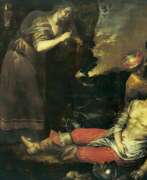

Luciano Borzone was an Italian painter of the late Mannerist and early Baroque periods, working mainly in Genoa. After an apprenticeship with Filippo Bertolotto, his uncle, Duke Alberigo of Massa Lunigiana, patronised his work as a pupil of Cesare Corte.
Luciano Bordzone was an outstanding portrait painter. In Genoa he painted the Purification for the church of San Domenico and the Baptism of Christ for the church of Santo Spirito.
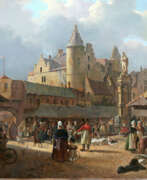

François-Antoine Bossuet was a painter and draughtsman of the Belgian school. Bossuet is known for his depictions of the landscapes, cities and monuments of Spain and Italy, with an emphasis on historic places, occasionally with genre scenes of everyday life. He is noted for the excellence of perspective in his paintings. He was professor at the Academy of Fine Arts in Brussels, from 1855 until 1876. His works may be seen in the Royal Museum of Fine Arts, Antwerp, the Royal Museums of Fine Arts of Belgium in Brussels, and the Victoria and Albert Museum in London.
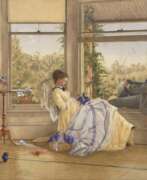

Emma Minnie Boyd, born Emma Minnie Beckett, was an Australian artist. She exhibited publicly between 1874 and 1932 with the Victorian Society of Artists, the International Centenary Exhibition of 1888 (Melbourne), the Royal Academy of Arts (London) and in a joint exhibition with her husband at Como House in Melbourne in 1902.
Emma Minnie Boyd had a talent for watercolour landscapes, although she painted in both watercolour and oil, depicting interiors, figures, portraits, still lifes and floral studies. She is part of the Boyd artistic dynasty that began with Emma and her husband Arthur.
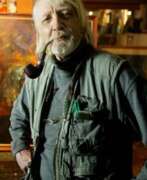

David Fielding Gough Boyd was an Australian artist, and a member of the Boyd artistic dynasty.
In 1946, he worked with his brother Guy at the Martin Boyd Pottery in Sydney. He also established a pottery studio in London in the early 1950s and continued working mainly in pottery through to the mid-1960s. In 1956, Boyd and his wife became widely known as leading Australian potters. They introduced new glazing techniques and potter's wheel use in shaping sculptural figures.
Boyd's painting career began in 1957 with a series of symbolic paintings on Australian explorers that aroused much controversy at the time, focusing as they did on the tragic history of the Aboriginal Tasmanians. In 1958 he exhibited a series of paintings based on the histological episodes in the explorations of Burke and wills and Bass and Flinders.[3] He joined the Antipodeans Group in the 1950s. Boyd discovered a technique in 1966 that he named Sfumato, after da Vinci's usage of the word to describe graduations of smoky tones in painting. Boyd's method achieved this effect through a new technique involving candle flame.
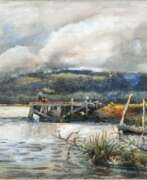

Arthur Merric Boyd was an Australian painter. He and his wife Emma Minnie (née à Beckett) established a lifestyle of being artists which many generations followed to create the popular image of the Boyd family. Boyd travelled and painted a good deal on the continent of Europe, and returned to Australia about the end of 1893, where he lived mostly in Sandringham and other suburbs of Melbourne for the rest of his life. He occasionally sent good work to the exhibitions of the Victorian Artists' Society, but never mixed much in the artistic life of his time.
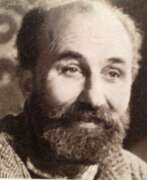

Eduard Georgievich Bragovsky (Russian: Эдуард Георгиевич Браговский) was a Soviet and Russian artist of the second half of the twentieth and early twenty-first centuries. He is known as a painter who specialized in the genres of landscape, portrait and still life.
Eduard Bragovsky closely connected his creative destiny with the Russian town of Tarusa, where he lived for several years. He painted many paintings, creating a "portrait" of the town. The artist actively traveled around the country, creating works from nature. His works were exhibited in various museums in Russia, the CIS and other countries, as well as at personal exhibitions in different parts of the world.
He actively participated in the work of the Moscow Union of Artists, was a member of the Board, headed the painting section.
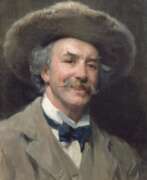

Frank Bramley was an English post-impressionist genre painter of the Newlyn School. Bramley studied at the Lincoln School of Art. He then studied at the Royal Academy of Fine Arts in Antwerp. He lived in Venice from 1882 to 1884 and then moved to Cornwall and established himself in the Newlyn School artist colony on Rue des Beaux Arts. Along with Walter Langley and Stanhope Forbes, he was considered to be one of the "leading figures" of the Newlyn School. In contrast to other members of the Newlyn school, Bramley specialised in interiors and worked on combining natural and artificial light in his paintings, such as A Hopeless Dawn. During his time in Newlyn, Bramley was a particular exponent of the ‘square brush technique’, using the flat of a square brush to lay the paint on the canvas in a jigsaw pattern of brush strokes, giving a particular vibrancy to the paint surface. In the early 1890s, his palette became brighter and his handling of the paint looser and more impastoed, while his subject matter narrowed to portraits and rural genre paintings. In 1894 Bramley became an Associate of the Royal Academy (ARA) and in 1911 he became a Royal Academician (RA). He was also a gold medal winner at the Paris Salon.


Yves Brayer was a French painter and lithographer known for his landscapes, portraits and still lifes.
Brayer studied at the École Nationale Supérieure des Beaux-Arts in Paris and then in Rome. He was influenced by classical art and inspired by Mediterranean landscapes, which he often depicted in his paintings. He was also interested in the culture of ancient Greece, which influenced his work.
Brye's early work was inspired by the Cubist and Surrealist movements. He was a founding member of the Paris School, a group of artists working in the French capital in the mid-twentieth century. He was also a member of the French Academy of Fine Arts and a Knight of the Legion of Honour.
Bryeux's work has been exhibited in prestigious galleries and museums around the world, including the Louvre in Paris, the Museum of Modern Art in New York and the National Museum of Western Art in Tokyo. His paintings are in many private collections.
Over the course of his career, Brye has received numerous awards and honours, including the Grand Prix de Rome and the Prix de l'Institut de France. He is considered one of the most important French artists of the 20th century.
